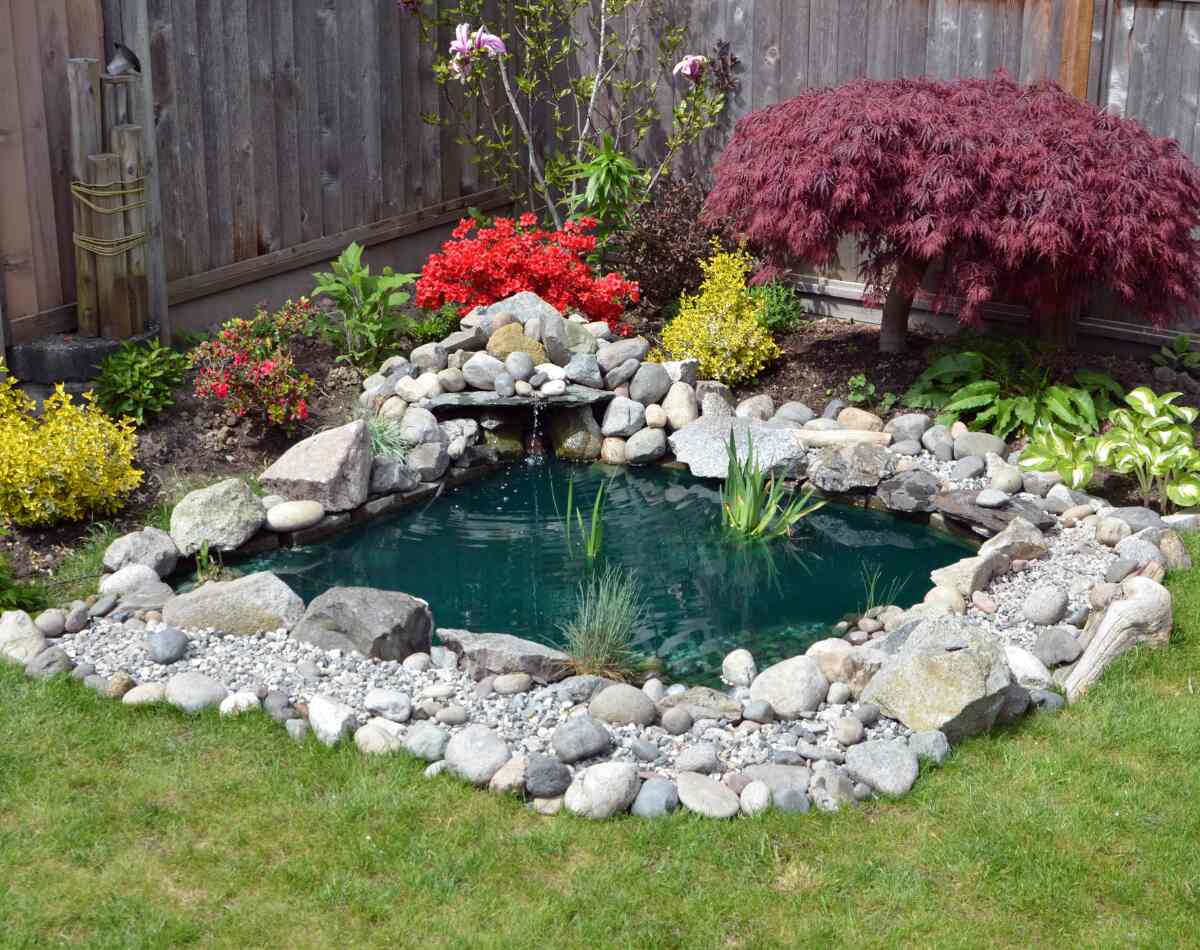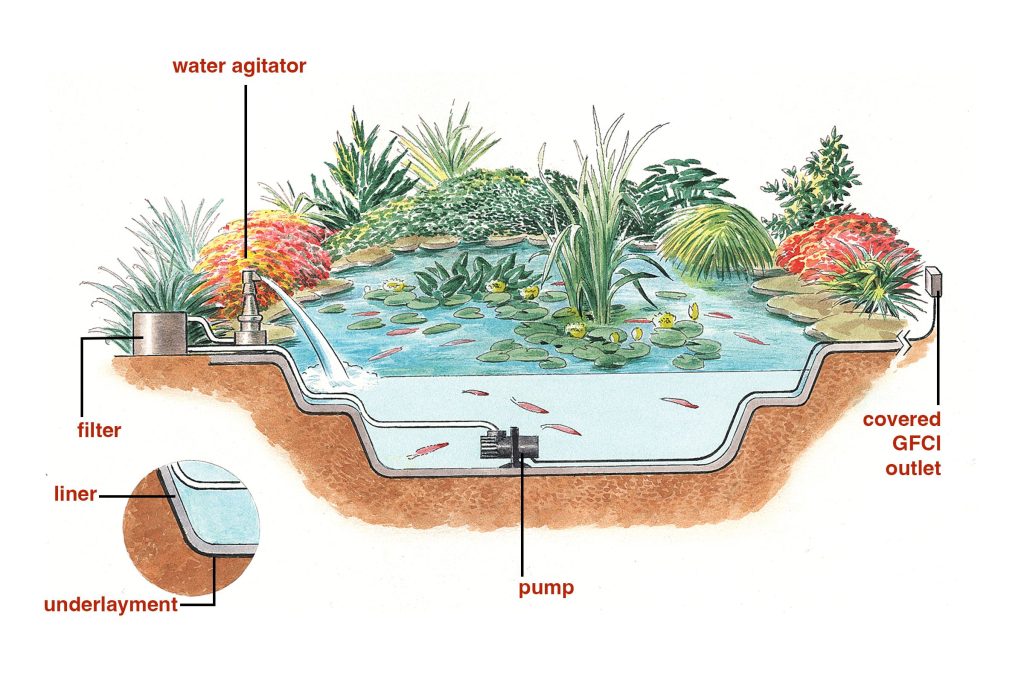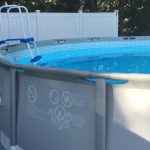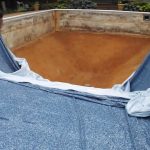Adding a beautiful and serene pond to your backyard can transform your outdoor space into a peaceful oasis. Whether you want to create a habitat for aquatic plants and fish, or simply want to enhance the aesthetics of your garden, building a backyard pond can be a rewarding and enjoyable project. In this comprehensive guide, we’ll walk you through the step-by-step process of building your very own backyard pond.
Step 1: Planning and Design
Before you start digging, it’s important to carefully plan and design your pond. Consider the size and shape of the pond, its location in your yard, and whether you want to incorporate water features such as fountains or waterfalls. Take into account the natural landscape and surroundings to ensure that your pond will blend harmoniously with the rest of your garden.
Make a rough sketch or use a design software to visualize the layout of your pond. This will help you determine the dimensions and shape that will best suit your space.

Credit: www.lawnstarter.com
Step 2: Choosing the Right Location
The location of your pond is crucial to its success. Look for a spot in your yard that receives a good balance of sunlight and shade, as excessive sunlight can lead to excessive algae growth, while too much shade can hinder the growth of aquatic plants.
Consider the proximity to trees, as falling leaves can create maintenance challenges. Additionally, ensure that the spot you choose is free from underground utility lines and pipes.
Step 3: Digging the Pond
Once you’ve finalized the design and chosen the location, it’s time to start digging. Use a garden hose or spray paint to outline the shape of the pond on the ground. Then, using a shovel or a small excavator, start digging the pond according to your planned dimensions.
Remember to create varying depths within the pond to accommodate different types of aquatic plants and fish. A shelf around the edge of the pond can provide a place for plants to grow and offer a gradual entry for wildlife.
Step 4: Installing the Pond Liner
After the digging is complete, it’s time to install the pond liner. Choose a high-quality pond liner that is durable and resistant to punctures. Unfold the liner and carefully place it in the pond, making sure it drapes smoothly and evenly without any wrinkles or folds.
Secure the edges of the liner with rocks or heavy stones to prevent it from shifting. Trim off any excess liner, leaving a few inches of overlap around the edges of the pond to allow for settling and securing the liner in place.
Step 5: Adding the Filtration System
An efficient filtration system is essential for maintaining the water quality in your pond. There are various types of filtration systems available, including biological filters, mechanical filters, and UV clarifiers. Choose a system that is suitable for the size of your pond and the intended aquatic life.
Position the filtration system at an appropriate location in or around the pond, ensuring easy access for maintenance and cleaning. Follow the manufacturer’s instructions for installation and setup to ensure optimal performance.
Step 6: Adding Rocks, Gravel, and Plants
Enhance the natural look of your pond by adding rocks, gravel, and aquatic plants. Arrange decorative rocks and gravel around the edges of the pond to create a natural border and provide habitat for beneficial bacteria.
Choose a variety of aquatic plants such as water lilies, lotus, and water hyacinth to add color and texture to the pond. Plant them in baskets or containers filled with aquatic soil and place them at different depths within the pond to create visual interest and provide shelter for fish and other aquatic life.
Step 7: Introducing Aquatic Life
If you wish to have fish in your pond, it’s important to carefully introduce them once the pond has been properly established. Choose fish species that are suitable for the size and depth of your pond, and acclimate them to the water temperature before releasing them into the pond.
Monitor the water quality and ensure that the pond is well-balanced before adding fish, as sudden changes in water parameters can be stressful for aquatic life. Additionally, consider adding snails and other natural pond inhabitants to help maintain a healthy ecosystem.
Step 8: Adding Water Features
If you want to take your pond to the next level, consider adding water features such as fountains, waterfalls, or bubblers. These features not only enhance the visual appeal of the pond but also help aerate the water and create a soothing ambiance with the sound of running water.
Choose water features that complement the size and style of your pond, and position them strategically to create a natural flow of water. Ensure that the water circulation and aeration provided by the features are beneficial for the overall health of the pond ecosystem.
Step 9: Maintenance and Care
Once your pond is up and running, regular maintenance is essential to keep it healthy and beautiful. Perform routine tasks such as removing debris, trimming aquatic plants, and checking the filtration system for optimal performance.
Monitor the water quality regularly and test for parameters such as pH, ammonia, and nitrate levels. Conduct partial water changes as needed and keep an eye out for signs of algae overgrowth or fish health issues. With proper care and maintenance, your backyard pond will thrive for years to come.

Credit: www.gameandfishmag.com
Conclusion
Building a backyard pond is a fulfilling and creative endeavor that can bring tranquility and natural beauty to your outdoor space. By following these step-by-step guidelines and incorporating your own personal touches, you can create a stunning pond that will be a source of joy and relaxation for you and your family. So, roll up your sleeves, grab your shovel, and get ready to bring the serenity of a pond into your own backyard!
Remember, the journey of building a backyard pond is just as rewarding as the end result. Enjoy the process, learn from the experience, and revel in the wonders of nature that will soon grace your backyard oasis.





